This month, we’re taking a new approach to our “ASK AN ENGINEER” series to check in with an industrial designer who has helped our team come up with creative applications for Azumo’s reflective display technology.
In this first installment of “ASK AN INDUSTRIAL DESIGNER,” we spoke with Chris Lenart of Lenart Studios in San Francisco about how he approaches his design work and what applications for reflective displays he envisions for the near future.
Can you tell us about your background as an industrial designer?
My background is industrial design, and I head up a design agency in San Francisco where we work across a lot of different creative disciplines. I’ve worked on developing consumer, homegoods, commercial, medical, out of box experiences, UI, UX, and lifestyle products – too many to mention.
Lenart Studios is a creative firm at its core, and our strength is bringing a human-centered point-of-view to every design.
Our goal is always to make sure end users have the best possible experience and that the design is ultimately something that’s good for the customer, culture, and environment.
How did you first hear about Azumo?
I first heard about Azumo back when it was called FLEx Lighting. We were introduced by a shared contact at a VC fund who was excited about how I might bring my experience working on E Ink displays to bear on project work for the folks at Azumo.
At the time, they needed help creating customer-facing concepts to illustrate the ways light guide film and LCD 2.0 might be applied to solve design problems, and I was excited about their products right away.
As an industrial designer, what was your first impression of Azumo’s reflective display technology?
Probably because my first impression was that the company was called FLEx lighting, I thought we were going to develop innovative lighting solutions. Light guide film has so many potential applications, whether they’re task-based or as overhead lighting.
Because so many of these ideas are still in the generative phase, I haven’t experienced the real product in action yet, but I love the concept of a reflective display that is thin, flexible, and low-power. The ways it can be used to create new products within the home, for surface illumination in vehicles, or for portable use are stunning.
How do you approach integrating Azumo’s technology into a design today?
Early on, I worked with Mike and Tony, CEO and CTO of Azumo, to help brainstorm creative applications for LCD 2.0, and we worked together to develop ideas that helped to exploit what the technology is good at and leverage the strengths. These included everything from the surface illumination of large architectural elements and auto displays to wearable devices and home wall decor.
Today, I see opportunities to use this technology to display NFTs in the home in a way that is unobtrusive and low-power. This could change the way we display digital art in the home, especially because Azumo’s LCD 2.0 displays are not invasive or bulky like a flat panel TV.
There are also huge opportunities in wearables where the display is on all the time with low power, but to take that even further imagine these low-power displays being used for…
- Digital signage, which could even be extended to create large-scale applications like billboards.
- Festival wayfinding solutions that are easy to put up, take down, and put anywhere due to their low power requirements.
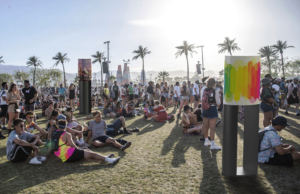
- Surface illumination on a whole new level. This could be a way to display images on a lampshade, whether you want to show off photos from a recent vacation, art, or some kind of animation. The same could be achieved on a coffee table top.
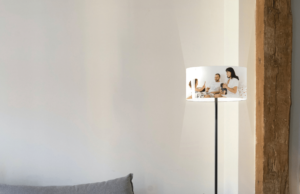
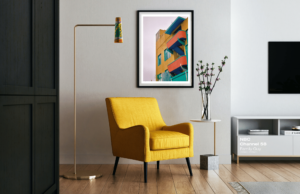
- Reflective surfaces that look and feel like paper that you can write on with a stylus. This could look like a poster, a Post-It note, or a notepad on the front of your fridge where you jot down your grocery lists.
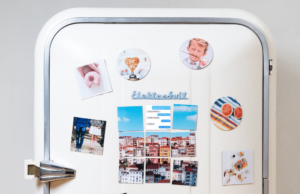
- Bistro tables or outdoor sandwich boards at cafes. The technology is perfect for outdoor use because it’s low-power and sunlight readable.
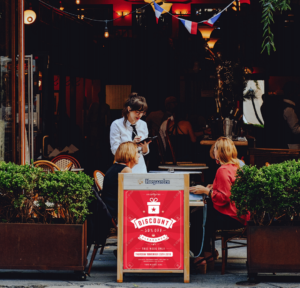
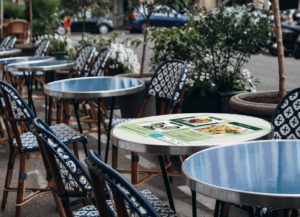
What do you wish other designers, marketers, or engineers knew about this tech?
Reflective display technology is still in its infancy but I wish creatives and engineers understood that there’s so much more we can do with this tech.
We all understand our phone or laptop’s screen in the most basic terms, but when it comes to reflective displays, most people don’t think of how it can be used for applications other than eReaders, like the Kindle.
We’ve got to start developing more items that will be good for the long term, and I see reflective displays as a part of that journey. Using reflective displays, designers can help create lower-power devices that are potentially a great match for renewable power sources. We’ve just got to start imagining what’s possible.
If you’d like to discuss a potential application for Azumo’s display technology, contact our team.
To contact Chris Lenart feel free to email him at chris@lenartstudios.com or visit lenartstudios.com.




